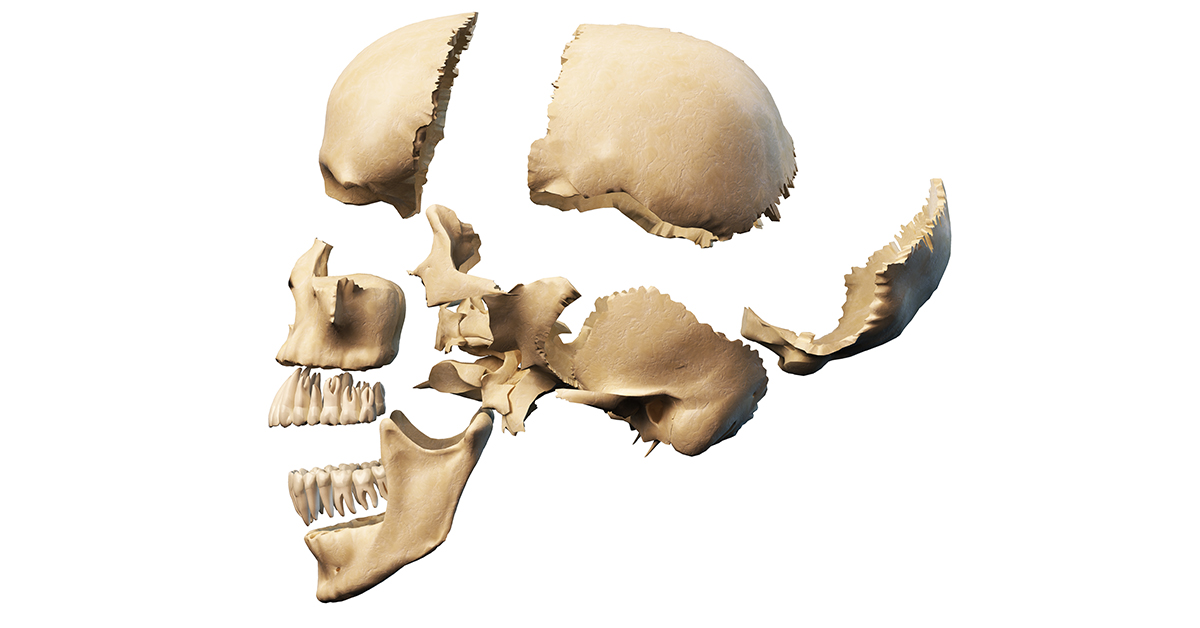Cranial Anatomy
 The brain is the control center of the nervous system, and consequently, the human body. The brain is in charge of movement, memory preservation, and involuntary functions in the body. The brain is comprised of many individual parts that have their own unique responsibilities. This article breaks down the brain into cerebrum, cerebellum, and brain stem.
The brain is the control center of the nervous system, and consequently, the human body. The brain is in charge of movement, memory preservation, and involuntary functions in the body. The brain is comprised of many individual parts that have their own unique responsibilities. This article breaks down the brain into cerebrum, cerebellum, and brain stem.
Cerebellum
The cerebellum is the largest part of the brain. It is divided into two sides called hemispheres. Each hemisphere is divided into lobes.
Frontal Lobes
The personality center of the brain is found in the frontal lobe. Focused here are organizational skills, problem solving, and higher cognitive functions like behavior and emotions.
Parietal Lobes
The parietal lobes process primary sensations like touch, pressure, and pain.
Occipital Lobes
Visual information like shape and color recognition are processed by the occipital lobes.
Temporal Lobes
Sensory input like sounds and smells are processed by the temporal lobes. They may also be responsible for short-term memory.
Corpus Callosum
The corpus callosum, a large bundle of nerve fibers, connects the left and right hemispheres of the brain, allowing neural communication between the two.
Fornix
The hypothalamus and other inner brain areas are connected by a bundle of nerve fibers called the fornix.
Thalamus
Information from the body's sensory organs is relayed by the thalamus, a large mass of grey matter at the top of the brain stem, to the appropriate regions of the brain.
Hypothalamus
Sexual urges, thirst, hunger, body temperature, aggressive behavior, and menstrual cycles in women are controlled by the hypothalamus.
Midbrain
Eye movement and other functions of the auditory and visual systems are controlled by the midbrain.
Pons
Movement, some involuntary functions, and sleep are regulated by the pons.
Medulla Oblongata
The respiratory and cardiac systems are controlled by the medulla oblongata, which is an area of the brain stem. It also controls reflex activities, like gagging or swallowing.
Pineal Gland
Melotonin, the chemical that regulates sleep, is created and secreted by the pineal gland.
Pituitary Gland
This gland controls and regulates the other glands in the endocrine system. It regulates their release of hormones that control body functions like growth and hunger.
Cerebellum
Movement, posture, balance, and muscle coordination are regulated by the cerebellum, which is located below the cerebellum at the back of the brain.
Brain Stem
Involuntary functions including breathing, heart rate, and digestion are regulated by the brain stem, which is located in front of the cerebellum and below the cerebrum. The brain stem also serves to connect and carry messages back and forth from the brain and spinal cord.
Bones in the Head
The bones in the skull and face protect the brain, provide facial structure, and provide the openings that allow food, water, and air to enter the body.
There are 22 bones in the skull, eight of which protect and surround the brain. The other 14 bones form our facial structure.
Cranium
The eight bones that protect the brain are called the cranium. The front bone forms the forehead. Two parietal bones form the upper sides of the skull, while two temporal bones form the lower sides. The ethmoid bone separates the nasal cavity from the brain and is located at the roof of the mouth between the eye sockets. The occipital bone form the back of the skull, and the sphenoid bone is the base of the skull. In newborn infants, the skull bones are not fully fused. They are instead linked together by fontanels, soft fibrous membranes. These allow slight compression of the skull during birth, as well as allowing for brain growth early in infancy. The bones of the skull typically fuse together like puzzle pieces by 18-24 months by immovable joints called sutures, which replace fontanels. In adults, the only skull bone not fused by sutures is the mandible, or lower jaw. It moves to allow opening and closing of the mouth.
Foraminae, small holes in the skull bones, allow blood vessels like the carotid arteries and nerves, to leave and enter the skull. The foramen magnum is the largest hole in the skull. This allows the spinal cord to meet the brain. Occipital condyles on either side of the foramen magnum articulate with the first vertebrae in the spine, C1, to allow up-and-down head movement.
Facial Bones
Facial structure and openings for food, water, and air are provided by the 14 facial bones, all of which are paired. The upper jaw and front of the hard palate are formed by the maxillae. The rear of the hard palate is formed by the palantine bones. The lower jaw is formed by the two bones that make the mandible, while the maxillae and mandible anchor the teeth. The cheeks are formed by the zygomatic bones, and the bridge of the nose is formed by the nasal bones. Part of the orbit, or eye socket, is formed by the lacrimal bones, while the division of the nasal cavity is formed by the inferior nasal conchae. The vomer, a single bone, divides the nostrils as part of the nasal septum.
 The Highest Quality of Neurosurgical Care
The Highest Quality of Neurosurgical Care